
|

|
|
Home Site Search Contact Us Subscribe
|
|
|
One-on-One: Architecture of Emotion and Place: Interview with Bartholomew Voorsanger, FAIA, MAIBC The architect's aspiration to create expressive, dynamic spaces is absolutely the key to his work. By Vladimir Belogolovsky August 17, 2011 From the outset, New York architect Bartholomew Voorsanger, FAIA, MAIBC, had all the right ingredients to be an accomplished professional. He grew up in the 1950-60s in the sublime setting of San Francisco, just the right city to be inspired by both natural and man-made beauty, yet not big enough to hold someone with his aspirations from venturing elsewhere to pursue the ambitious dream of every architect – building in a great metropolis.
As a 13-year-old, Voorsanger visited New York with his father, a successful businessman, and his mother, an artist. A brief stay in the city sparked his vision immediately. By then, he already knew he wanted to become an architect. A few years earlier, his mother had taken him to see Bernard Maybeck’s First Church of Christ, Scientist in Berkeley, California, with its elaborate display of details and spectacular play of light. In this evocative setting, a future architect was born, and his dream satisfied both parents in that a good architect has to be a business person as well as an artist.
Voorsanger studied art and architecture at Princeton University and received his Master in Architecture degree from Harvard University in 1964. He then worked in Montreal for several years, followed by a decade of working for I.M. Pei in New York City, where he ran projects in Canada and throughout the United States and, for six years, Iranian projects that were not constructed. He founded his firm in 1978 as Voorsanger and Mills Architects and reorganized it in 1990 as Voorsanger Architects. The architect has received awards from many prestigious organizations, including the American Institute of Architects. Architecture professor Livio Dimitriu writes about his work: “For Voorsanger, nature is used as an architectural material to construct space, just like any other material.”
Voorsanger’s most celebrated projects are the Elie Tahari Fashion Design Office in New Jersey, where the architect turned everyone’s attention from the surrounding industrial warehouses to two meditative internal gardens that brighten the mood of the entire office environment (2003); the Asia Society and Museum on Park Avenue with its idyllic indoor garden and spectacular multi-story high-tech stair (2001); the Garden Court of the Pierpont Morgan Library (1992, demolished in 2004), an urban oasis under a wave-like glass roof which, despite its attractiveness, gave way to a much grander addition by Renzo Piano; and a number of exclusive private residences.
During our recent meeting at his studio on the top floor of a discreet building in the Garment District of Midtown Manhattan, Voorsanger’s first comment was: “Architecture, to me, is all about evoking emotions.” This asserts that his aspiration to create expressive, dynamic spaces is absolutely the key to his work, and, despite the architect’s attentiveness to resolve such notions as comfort and functionality, I personally can forgive both a little dysfunction and discomfort in exchange for a bit of transcendence his projects offer – visually, spatially, and ultimately, emotionally.
The architect is currently working on several new projects: the National World War II Museum complex in New Orleans, the National Military Museum in Abu Dhabi, the Dubai Lofts and Villas, the remodeling of Terminal B at Newark International Airport, and several meticulously detailed lofts and residences, including a house in Napa, California, that he likens to a Maserati sports car for its beauty and superb performance.
Vladimir Belogolovsky: You started your own practice after working for I.M. Pei for about 10 years. Did you work directly with Pei? How was that experience?
Bartholomew Voorsanger: I was a design associate and worked very closely with I.M. Pei, James Ingo Freed, and Henry Cobb. Meetings often would take place in a restaurant, and there would be a little napkin sketch. Then, I would take this sketch to the office and there would be two of us, then four, eight, sixteen, however many, to finish another $100 million project. Each partner was very different. I.M. injected brilliance, inscrutability, and sophistication; Jim his obsessive desire for endless redesign; and Harry the crystalline clarity of thought and academic conversance. It was an exciting time for the firm. We all learned a lot from the partners and the other very talented architects.
VB: Why did you leave his office?
BV: Well, people who work in such star firms often feel that they are actually in control of design. It is not true. All three partners would look at the design progress, and then give very specific directions. The partners were completely in control. And, if you are really honest with yourself, yes, you are contributing your ideas, but in reality, all you are is a participant. For me, an appropriate metaphor would be the sport of track and running the high hurdles, which requires incredible speed, coordination, precision, and endurance. And that is symbolic of the design process. But the difficulty when you are with I.M. or the other partners is that every time you are ready to win a race, they unintentionally push you slightly off balance. They say, “Why don’t you do it this way?” or “Why don’t you do it that way?” So, you never win. And at some point you ask yourself: “Do I ever want to win?” I had to choose between two options – one was having a very stable, comfortable, well-paid, and prestigious job with the illusion that I was in control, and the other, was to strike out on my own, which is terrifying and unknown but offered the potential for winning – and ultimately, to test oneself.
VB: So this was the moment when you decided to start your own practice. What was your first commission?
BV: I left in 1978 and worked on small projects with several employees. None of those projects ever materialized. Then, a few months later, I.M. called and asked me to finish one of his projects because they were too busy. That was a $30 million project in Iran for which I had been the project architect!
VB: Another project that was never built...
BV: Right. It was just before the Iranian Revolution. Then, in early 1979, Ayatollah Khomeini came back to Iran. At that point, all projects stopped. Then, James Ingo Freed recommended us for a competition to design a 40,000-square-foot continuing education facility for New York University on 42nd Street. We won it, and finally something was built! It was published in Progressive Architecture and indeed put us on the map. It was really exciting to have my own firm. We didn’t have a day off for the first two years! Eventually, we grew to about 10 people and moved into our current building. Now, we have around 20 to 25 people, which can be considered small, but it is the perfect size to do creative work, be selective, and manage it well.
VB: Could you describe your work? Architecture is a real world, but it is also a vision. What is your vision?
BV: Our work is of radically different scale and public participation – museums, residences, and transportation projects. People come to us because they want something “special.” And it is going to take an incredible amount of work both on their and our parts to achieve it. Most good architecture is expensive, and unique architecture is especially challenging. We are very patient, and we work very hard. I want people to come into my space and be emotionally transformed, to remember these spaces just as they remember great performances. What is important is that geometry needs to be resolved with dynamic and exciting elements. I also think about new materials and how they are detailed and integrated into the whole. What is ultimately and essentially important is one’s serious responsibility to the public sector. There is the ever pressing obligation to amplify a sense of place.
VB: What issues in architecture interest you most? What is your design process?
BV: Every project begins as a tabula rasa. We first establish an interactive discourse with the client, and then typically develop three strategies in the form of conceptual models – one radical, one intermediate, and one relatively calm. Physical models are much faster than the most advanced software. Clients are always told that all three schemes generally cost the same amount of money, so they should pick the one that resonates with them emotionally. Then, the clients begin to think about a particular view or the height of a wall, and that’s how we determine the direction. In this way our residential projects reflect how the client desires to live in the space. Architecture is a long process. Even for many of our houses, it takes four to five years from start to finish. I always look at three aspects – the practical, the tectonics, and the art. The idea is never to overemphasize one over the other but to keep them in balance. And you can only come up with something extraordinary when you push the boundaries for each of the aspects. Design, to me, is like a labyrinth. One must have a clear concept, the mythical Ariadne’s golden thread, only then can you move forward by making hundreds of decisions.
VB: Your work is quite sculptural. Are you inspired by any particular artists or architects?
BV: Not really. What is especially enervating is the tension in producing architecture interactive with nature. Sometimes this is an attempt to come up with a new tectonic resolution. For example, working on the Wildcat Ridge Residence in Aspen, Colorado, was tied to the dialogues with the engineers. This house is 240 feet long to take advantage of the incredible view to the west – one of the most spectacular landscapes in America. I wanted to avoid having interior columns, and to achieve such a long span in a very efficient way without using deep beams, we decided to use folded plate construction. The way these steel plates were designed and folded had to do not only with spatial manipulation but sun shading and the structural requirements to withstand snow and wind loads.
VB: Do you think you have a style, and do you try to make your work recognizable?
BV: Absolutely not. What I am concerned about most is to strive for the essential. As an architect, if you are not at least trying to do something that has never been done before, then I don’t know why you are doing architecture at all. I embrace innovation, and everybody in my office shares this belief. To me it is more interesting to start work on an often prosaic program, then create architecture of unanticipated theater. Many architects have a certain consistency that can be identified as a style. But our clients pick us because they know something special will emerge – they like our use of natural materials, the spaces, and the transparency of design. They often can’t explain why they are captured, but they are moved emotionally, and they want something particular and personally idiosyncratic.
VB: Many of your designs feature vast landscapes, particularly mountains. In your introduction to the book The Practice of Voorsanger Architects Of Architecture and Captive Landscapes, you say that in your projects, “nature is sometimes expressed metaphorically, at other times, as spectacle.” Could you elaborate?
BV: Nature is incredibly precious. It is a living element, and how does one sustain it in a completely artificial environment? How do you translate it into architecture? For example, the house in Aspen is located in the mountains at the height of 9,000 feet with these incredible views. How do you bring the scale of a house to that level? The idea was to infuse the alpine scale into the house. The main wall along the entire house is made up of huge two- to three-meter-long rock boulders with living moss on them that we found in Montana. You have to think about how to participate in this scale, how to modulate the view that goes on for miles. This house is spectacular and powerful. In the converse, Elie Tahari’s modest project in New Jersey has specific interior gardens that are Zen spectacles.
VB: You keep mentioning this incredible house in Colorado, designed for Leon Hirsch, the founder of the United States Surgical Corporation. How did you get this commission?
BV: This was not my first house for him, but the fifth.
VB: He keeps moving and keeps calling?
BV: No, he owns most of the houses and has sold some of them. One is very small, a pavilion, but it is completely designed like a piece of millwork. It is in Montana, and it sits on a piece of land of 300,000 acres, or 120,000 hectares.
VB: That is the exact size of New York City with all its boroughs.
BV: It is very impressive.
VB: The Aspen house was sold to Roman Abramovich. He hired you to make some changes. What are you changing there?
BV: I can’t tell you.
VB: Some architects design very provocative houses with an abstract idea generating space that is often more important than the necessities of the daily habits of a specific client. What is your approach?
BV: I am very sympathetic to such approaches, but a prevailing danger in not solving the practical aspects is that the client will certainly do it for you and ultimately the design will be compromised. One example of an ingenious solution for both practical and aesthetic issues is a house near Bordeaux, France, by Rem Koolhaas for a wheelchair-bound client. It is a total reinvention of a house that completely liberates a handicapped person with its moving partitions and platforms. This house is everything I am interested in. It is strategic, exciting, and it is transformative. It simply transformed its owner’s life through architecture!
VB: The house you mention is full of fascinating and inventive features. You have also done a number of unique houses. What are the most unusual features that you have ever designed?
BV: What is special about these houses is a very high level of fabrication, detail, and execution. The wall of stone in the Aspen house is an example. The owner sprays the stone moss three times a year to sustain it! The structure of a house in Charlottesville, Virginia, is resolved in such a way that the roof seems to float. A house in Montana has a 32-by-11-foot window – this size is beyond one’s peripheral vision so nature just inhabits effortlessly. A house in Los Angeles incorporates a new cave with a performance space built into it so that the sound of live events does not irritate the neighbors. A house in Wyoming was built on a 400,000-acre site, and has its own 9,000-foot-long runway for the client’s private jet. It had to be that long to be used for emergency landings by Strategic Air Command. And again, what is original about all of these projects is the experience of the natural landscapes and working with engineers who express their structures.
VB: Many of your projects are very conscious of the latest energy saving strategies. Yet, your houses have a lot of glass. Could you explain how these concepts coexist?
BV: First of all, we now have more and more stringent energy building codes for sustainability. What permits us to use so much glass, as in the case of the house in Napa built almost entirely of glass, is the use of major overhangs, geothermal wells, natural materials, specially coated glass, efficient mechanical equipment, tight insulation, electronically controlled shades, solar panels, and on and on. So, these houses enjoy great views, yet they are energy efficient. You can’t compare these houses to the Farnsworth House by Mies van der Rohe or the Glass House by Philip Johnson, which you couldn’t build today under the present codes. They would not comply because of their design, particularly their lack of overhangs. But even though some of these houses are situated so high in the mountains that the oxygen level is reduced and the efficiency drops by 30%, requiring more capacity for heating and cooling, by using all the latest technologies and smart design strategies we are able to build very efficient, sustainable, yet very open and liberating houses.
VB: I imagine these technological breakthroughs are very expensive. Will the initial investments in these houses ever be recouped? In other words, is it worth it?
BV: We and our clients are dedicated to sustainability – but not without the ambition to create architecture that is art. Sustainable technologies are becoming less and less expensive. The energy bills are reduced dramatically. Huge innovative houses have electric bills lower than much smaller traditional houses that depend on fossil fuels. But this also depends on where you are. In some areas, you may not use geothermal wells; in other places, they are very affordable. But in any case, oil is becoming increasingly expensive and these new technologies will only make more and more sense in the future.
VB: Rumors have it that during the energy crisis in the mid-1970s when oil prices peaked, Philip Johnson, who was very wealthy, could not afford to pay to maintain his famous Glass House in Connecticut. It was only economical when the oil was affordable.
BV: Many of my clients want to be sustainable, and they are very dedicated to it. They don’t care if they ever recoup their investments. They want to prove that the goals we set can be achieved technologically.
VB: Are there any particular houses that inspire you most?
BV: There is a new Chinese pavilion installed at the Metropolitan Museum of Art. Every time I go, what amazes me is its incredible craftsmanship and how it is put together. It is very tectonic. Also, Katsura Imperial Villa in Kyoto. It is a delicate architecture of paper screens despite all the military conflicts when constructed. It was possible to build because it was all set behind huge defensive walls. So I kept thinking: how can I have that kind of transparency and still feel protected? Frank Lloyd Wright – his masterful use of a variety of scales and transitions from very compressed spaces to very high, dramatic volumes. They ignite a very explosive and emotional feeling. His houses are very special. I love the German Pavilion in Barcelona by Mies, Palais Stoclet by Josef Hoffmann in Brussels, and the Maison de Verre by Chareau in Paris. I love many of these examples for their spatial invention, and their unbelievably beautiful surfaces and unique details. I dream about building projects in Japan because of the country’s superb level of craftsmanship. It is the details that really express one’s ideas and commitments. I admire the Chinese artist Ai Weiwei’s statement, “Only when we revere tradition can we move away.”
VB: You designed all of these sophisticated houses for others. Have you done one for yourself?
BV: I own an 18th-century colonial house in Connecticut. I did not touch its design – it is protected as a historical landmark. The kind of house I would want to design I can’t afford. And I don’t have to do it to express my point of view, because it is already manifested in my built work. I’ve already designed all of these houses for clients. This is who I am. If I could afford it, I would build small experimental pavilions and not just one house – one pavilion in the mountains, one next to the sea, and one in the desert. Nature is the ultimate modifying force.
Postscript:
Following my conversation with Voorsanger, I was thinking about two very opposing forces that propel his emotional architecture – his absolute devotion to embracing the latest building technologies in his work, and his love for the warm, delicate, and richly detailed architecture of the past. It must be this tension that drives architecture forward. The architect’s professional position proves that in designing for others, one can really express oneself. After all, his clients live in his houses. They all reflect the architect’s hand and belief in pursuing architecture that has never been done before.
Vladimir Belogolovsky, founder of the New York City-based Intercontinental Curatorial Project Inc., organizes, curates, and designs architectural exhibitions worldwide. Trained as an architect at Cooper Union, he has published more than 100 articles in American, European, and Russian publications, and is the American correspondent for the Russian architectural journals Architecturny Vestnik, SPEECH, and TATLIN. He has authored several books, including Felix Novikov for the series Masters of Soviet Architecture, and Green House on leading sustainable projects. His book Soviet Modernism: 1955-1985, written with architect Felix Novikov, was released in October 2010. He can be reached at vbelogolovsky@gmail.com.
Also by Vladimir Belogolovsky
One-on-One:
Architecture as a Social Instrument: Interview with Bjarke Ingels of BIG
One-on-One: Putting
Colors Together: An Interview with Will Alsop
One-on-One: The Art of Ennobling Communities:
Interview with Sara Caples and Everardo Jefferson
One on One: Elusive Architecture:
Interview with Kengo Kuma
|
(click on pictures to enlarge) 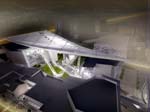 İVoorsanger Architects PC Canopy of Freedom, U.S. Freedom Pavilion, The National World War II Museum, New Orleans (under construction) 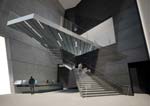 İVoorsanger Architects PC Campaigns Pavilion Atrium, The National World War II Museum, New Orleans (under construction) 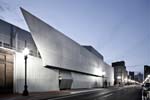 İThomas Damgaard Theater Pavilion, The National World War II Museum, New Orleans, 2009 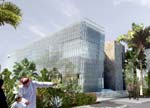 İVoorsanger Architects PC Dubai Lofts and Villas, United Arab Emirates (currently on the boards) 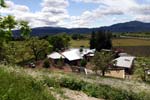 İVoorsanger Architects PC Napa Valley Residence and Vineyards, 2011 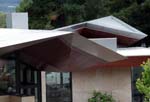 İVoorsanger Architects PC Napa Valley Residence & Vineyards, roof detail  İThomas Damgaard Wildcat Ridge House, Aspen, Colorado, 2005, west facade 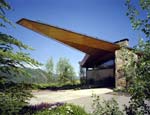 İPaul Warchol Wildcat Ridge House, exterior cantilever 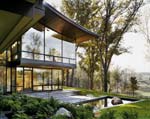 İElizabeth Felicella Blue Ridge House, Charlottesville, Virginia, 2005; overlooking patio and landscape 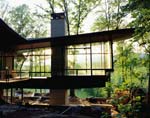 İDoug Brody Blue Ridge House, under construction 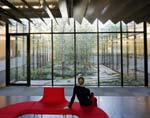 İElizabeth Felicella Elie Tahari Fashion Design Office, New Jersey, 2003; overlooking interior garden 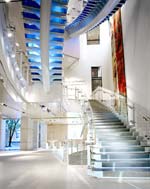 İThomas Loof The Asia Society and Museum, Park Avenue, New York, 2001; lobby staircase 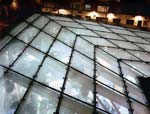 İThomas Loof The Asia Society and Museum, skylight over indoor garden 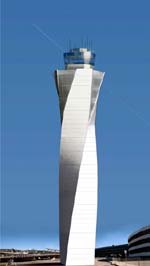 İVoorsanger Architects PC LaGuardia Airport Air Traffic Control Tower, New York, 1998 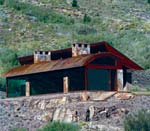 İCarla Breeze Birch Creek House, Lima, Montana, 1995  İCarla Breeze Birch Creek House, lake view 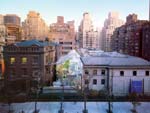 İDavid A. Loggie Pierpont Morgan Library, New York, 1992; glass pavilion from Madison Avenue 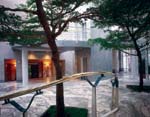 İPaul Warchol Pierpont Morgan Library, library Garden Court  İNathanial Liberman Martha’s Vineyard House, Massachusetts, 1976 (first built project) 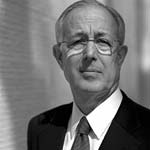 İVoorsanger Architects PC Bartholomew Voorsanger |
İ 2011 ArchNewsNow.com